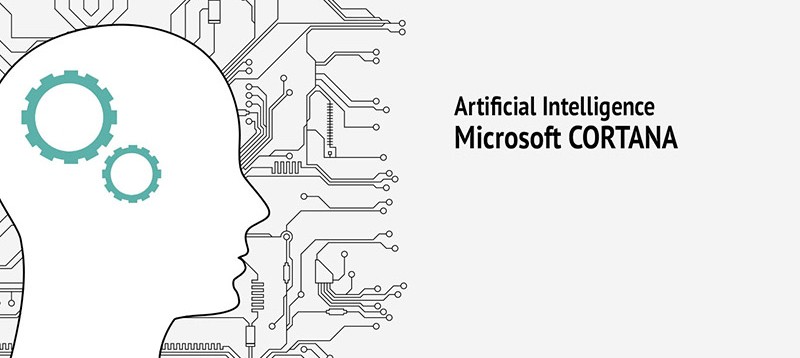Artificial Intelligence is no longer fancy; it’s mainstream.
The Siris, Alexas, and the Watsons of the world are just precursors to what’s to come. Individuals and businesses are both going to be impacted by the rise of Artificial Intelligence.
As it were, our focus at Kalpavruksh is always to seek out technologies that impact businesses in a big way, and Artificial Intelligence is already to serve customers, to help create websites, and to spew out reams of data to help businesses make better decisions.
Artificial intelligence, as we know it, isn’t new. It first started out as robotics. Then, it grew into an eclectic mix of machines, computing, and data. Together, it’s powering much of the industry already.
Big data, machine technology, computing, and IT aside, artificial intelligence is now going to be back into everything we touch, every business we deal with, and every interaction we might have with businesses – both today and tomorrow.
The IoT (Internet of Things) already knocks on the mix of artificial intelligence with machines, devices, and the Internet (along with the combined computing power in the world today).
Artificial intelligence has already made its first stop with customer service. According to Gartner, it’s predicted that more than 85% of all inbound customer interactions will be managed without humans.
Research is now being funded (Harvard gets a whopping 428 million just to investigate why brains are better at learning and information retention than artificial intelligence is).
But this isn’t about whether human brains are better compared to the machine learning and pattern recognition abilities of artificial intelligence.
Thanks to Artificial Intelligence, the usual mix of software, tools, and technology we use (and we insist that our clients use) just got better.
That brings us to Cortana.
What is Cortana & Why Should You Care?
Microsoft shipped out Cortana — a virtual assistant of sorts — with Windows 10. Cortana initially saw its use limited to using natural language search to find files; to allow you to set up reminders, places, and people; search the web; identify songs; perform calculations and conversions; track flights and shipping details; and more.
Then, Microsoft obviously extended the feature set to include Cortana for Microsoft Dynamics CRM which helps businesses keep track of the various Dynamics 365 activities such as those below:
- Get customer or lead relationship insights
- Get insights on organizational activities for your business.
- Gain from document insights, product recommendations, just in time knowledge article suggestions, and customer insights
- Learn on the go about each customer (including order history) and serve your customers better.
Later, more Cortana preview features were added to the mix such as quick overviews of performance metrics within Dynamics 365, track deals or activities, and bulk importing of data.
Digging Under the Hood: Cortana for Microsoft Dynamics 365
There’s more to Cortana than what might appear at first glance. Integrations with other tools such as PowerBI and native tools for Microsoft bring a lot more power to what’s already an enterprise-level CRM solution.
For instance, just data presented in dashboards won’t do much for users. But when there’s a need for a search, for instance, the combined use of PowerBI and Cortana gives users almost superpowers when it comes to searching and finding information within an organization.
For instance, a simple command such as: Where are my most important customers, sorted by average purchase value, by the city in a certain country?
Cortana can also work with intelligent filters such as trying to zone in only on customers that belong to your territory. Users can look up all sorts of information when they need to — including possibility of win rate for conversions in a new region or territory, overviews by partner associations, customer purchase history, most profitable product lists, sales by referrals, expected revenues off each region or territory, and more.
Cortana Analytics: Dig In & Cash Out

One of the best features with Cortana applied to enterprises is its In-built analytics Suite. The Cortana Analytics suite meshes information management, big data storage, machine learning, analytics, and more.
Together, Cortana Analytics can then give you (the user) various dashboards, visualizations of data accumulated, perceptual intelligence, and also pre-configured solutions depending on your use cases.
For businesses, there’s a set of various intelligent actions to take advantage of:

With all data, information, analytics, and the Artificial Intelligence engine that Cortana brings to the table, businesses clearly have answers to a few strategic level questions such as:
- What happened?
- Why did it happen?
- What will happen?
- What should I do next?
Examples of Dynamics CRM Reimagined with Cortana
Physicals, Massive Mechanical Operations, complex Industrial equipment – all of that has to come together to run a gigantic fleet of more than 26 cruise ships, sailing all over the world.
Carnival Maritime, the marine service unit of the Costa Group, has all of that responsibility. But it also has more data than it knows what to do with.
Alexander Klingelhoefer, Director of Continuous Improvement, Carnival Maritime puts it like this:
Arundo’s big data and advanced analytics solution with Cortana Intelligence Suite is very interesting for us to investigate, especially how we can further increase efficiency in our ship operation.
We spend a lot of money on maintenance and repair of our ships, so we’re looking forward to doing predictive maintenance, by using the data to understand how the machines operating and proactively maintaining them or exchanging parts before something breaks down.
Arcelik — a major manufacturer of everything from Kitchen appliances to gourmet tea dispensers – customer service is the secret to their success. Specifically, it’s post-sales customer service where they are known to be fast and efficient.
According to Suat Celebi, IT Manager, Supply chain at Arcelik:
Accuracy up to 80 percent, turnover expected up by 10 percent. Here’s how well the solution works: After six months in production, the spare-parts forecasting solution has an 80 percent accuracy rate, up from about 60 percent before. Moreover, the solution produces forecasts for all 350,000 spare parts SKUs, compared to just 100,000 SKUs covered previously.
We needed the right solution, but we also needed it quickly to ensure we stayed ahead of our business requirements. With Cortana Intelligence Suite, we got both. We wanted a quick win with forecasting and we got it. We are very happy.
See how data, insights, information, and intelligence all comes together? The application of Cortana along with PowerBI and the rest of innate features that now ship with Dynamics CRM holds tremendous potential.
We, at Kalpavruksh, are thrilled at what’s in store at the crossroads where businesses and technology meet.



